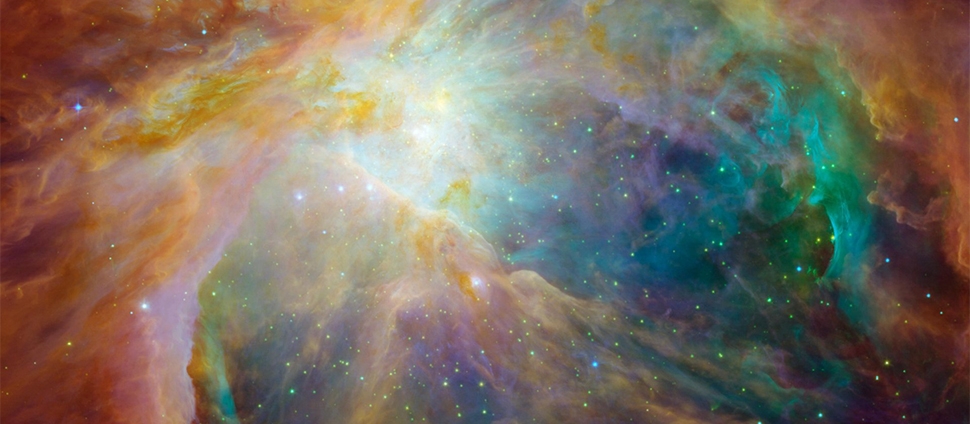Document Type
Article
Publication Date
6-2021
Publication Title
Astronomy and Astrophysics
Abstract
Context. Near-infrared interferometry has become a powerful tool for studying the orbital and atmospheric parameters of substellar companions.
Aims. We aim to reveal the nature of the reddest known substellar companion HD 206893 B by studying its near-infrared colors and spectral morphology and by investigating its orbital motion. Methods. We fit atmospheric models for giant planets and brown dwarfs and perform spectral retrievals with petitRADTRANS and ATMO on the observed GRAVITY, SPHERE, and GPI spectra of HD 206893 B. To recover its unusual spectral features, first and foremost its extremely red near-infrared color, we include additional extinction by high-altitude dust clouds made of enstatite grains in the atmospheric model fits. However, forsterite, corundum, and iron grains predict similar extinction curves for the grain sizes considered here.We also infer the orbital parameters of HD 206893 B by combining the 100 μas precision astrometry from GRAVITY with data from the literature and constrain the mass and position of HD 206893 C based on the Gaia proper motion anomaly of the system.
Results. The extremely red color and the very shallow 1:4 μm water absorption feature of HD 206893 B can be fit well with the adapted atmospheric models and spectral retrievals. By comparison with AMES-Cond evolutionary tracks, we find that only some atmospheric models predict physically plausible objects. Altogether, our analysis suggests an age of 3–300 Myr and a mass of 5–30 MJup for HD 206893 B, which is consistent with previous estimates but extends the parameter space to younger and lower-mass objects. The GRAVITY astrometry points to an eccentric orbit (e = 0:29+0:06 ��0:11) with a mutual inclination of <34:4 deg with respect to the debris disk of the system.
Conclusions. While HD 206893 B could in principle be a planetary-mass companion, this possibility hinges on the unknown influence of the inner companion on the mass estimate of 10+5 ��4 MJup from radial velocity and Gaia as well as a relatively small but significant Argus moving group membership probability of 61%. However, we find that if the mass of HD 206893 B is <30 MJup, then the inner companion HD 206893 C should have a mass between 8–15 MJup. Finally, further spectroscopic or photometric observations at higher signal-to-noise and longer wavelengths are required to learn more about the composition and dust cloud properties of HD 206893 B.
Keywords
planets and satellites: atmospheres, planets and satellites: detection, planets and satellites: gaseous planets, techniques: interferometric
Volume
652
Issue
A57
DOI
10.1051/0004-6361/202140749
Rights
© ESO 2021
Version
Version of Record
Recommended Citation
Kammerer, Jens; Lacour, S.; Stolker, T.; Mollière, P.; Sing, D. K.; Nasedkin, E.; Kervella, Pierre; Wang, J. J.; Ward-Duong, Kimberly; and al, et, "GRAVITY K-band spectroscopy of HD 206893 B" (2021). Astronomy: Faculty Publications, Smith College, Northampton, MA.
https://scholarworks.smith.edu/ast_facpubs/127


